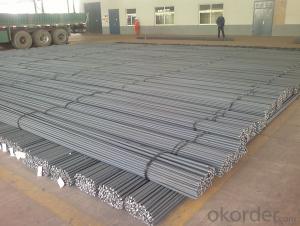Hot Rolled Steel Deformed Bar D-BAR HRB400 HRB500 SD400
- Loading Port:
- Tianjin
- Payment Terms:
- TT OR LC
- Min Order Qty:
- 500 m.t.
- Supply Capability:
- 30000 m.t./month
OKorder Service Pledge
OKorder Financial Service
You Might Also Like
Item specifice
Product Description:
OKorder is offering Hot Rolled Steel Deformed Bar D-BAR High Qulity HRB400 HRB500 SD400 at great prices with worldwide shipping. Our supplier is a world-class manufacturer of steel, with our products utilized the world over. OKorder annually supplies products to European, North American and Asian markets. We provide quotations within 24 hours of receiving an inquiry and guarantee competitive prices.
Product Applications:
Hot Rolled Steel Deformed Bar D-BAR High Qulity HRB400 HRB500 SD400 are ideal for structural applications and are widely used in the construction of buildings and bridges, and the manufacturing, petrochemical, and transportation industries.
Product Advantages:
OKorder's Hot Rolled Steel Deformed Bar D-BAR High Qulity HRB400 HRB500 SD400 are durable, strong, and resist corrosion.
Main Product Features:
· Premium quality
· Prompt delivery & seaworthy packing (30 days after receiving deposit)
· Corrosion resistance
· Can be recycled and reused
· Mill test certification
· Professional Service
· Competitive pricing
Product Specifications:
Standard | GB | HRB500 | |
Diameter | 6mm,8mm,10mm,12mm,14mm,16mm,18mm,20mm, 22mm,25mm,28mm,32mm,36mm,40mm,50mm | ||
Length | 6M, 9M,12M or as required | ||
Payment term | TT or L/C | ||
Application | mainly used in construction industry to reinforce concrete structures and so on | ||
Quality | First quality, the goods are from Chinese big manufacturers. | ||
Type | Hot rolled deformed steel bar | ||
Brand name | DRAGON | ||
Note:
1. Our products are produced according to national standard (GB), if not, supply according to national standards (GB) or agreement as customer required.
2. Other Grade and Standard Deformed Steel Bar we can supply:
Grade: GR40/GR60, G460B/B500A/B500B/B500C,BST500S
Standard: ASTM, BS, DIN
The Minimum Order Quantity of these products is high, and need to be confirmed.
3. We can not only supply Deformed Steel Bar; if you need anything about building materials, please contact us for further information.
4. Please send us your detail specifications when inquire. We will reply to you as soon as possible. We sincerely hope we can establish a long stable business relationship.
FAQ:
Q1: Why buy Materials & Equipment from OKorder.com?
A1: All products offered byOKorder.com are carefully selected from China's most reliable manufacturing enterprises. Through its ISO certifications, OKorder.com adheres to the highest standards and a commitment to supply chain safety and customer satisfaction.
Q2: How do we guarantee the quality of our products?
A2: We have established an advanced quality management system which conducts strict quality tests at every step, from raw materials to the final product. At the same time, we provide extensive follow-up service assurances as required.
Q3: How soon can we receive the product after purchase?
A3: Within three days of placing an order, we will begin production. The specific shipping date is dependent upon international and government factors, but is typically 7 to 10 workdays.
Q4: What makes stainless steel stainless?
A4: Stainless steel must contain at least 10.5 % chromium. It is this element that reacts with the oxygen in the air to form a complex chrome-oxide surface layer that is invisible but strong enough to prevent further oxygen from "staining" (rusting) the surface. Higher levels of chromium and the addition of other alloying elements such as nickel and molybdenum enhance this surface layer and improve the corrosion resistance of the stainless material.
Q5: Can stainless steel rust?
A5: Stainless does not "rust" as you think of regular steel rusting with a red oxide on the surface that flakes off. If you see red rust it is probably due to some iron particles that have contaminated the surface of the stainless steel and it is these iron particles that are rusting. Look at the source of the rusting and see if you can remove it from the surface.
Images:
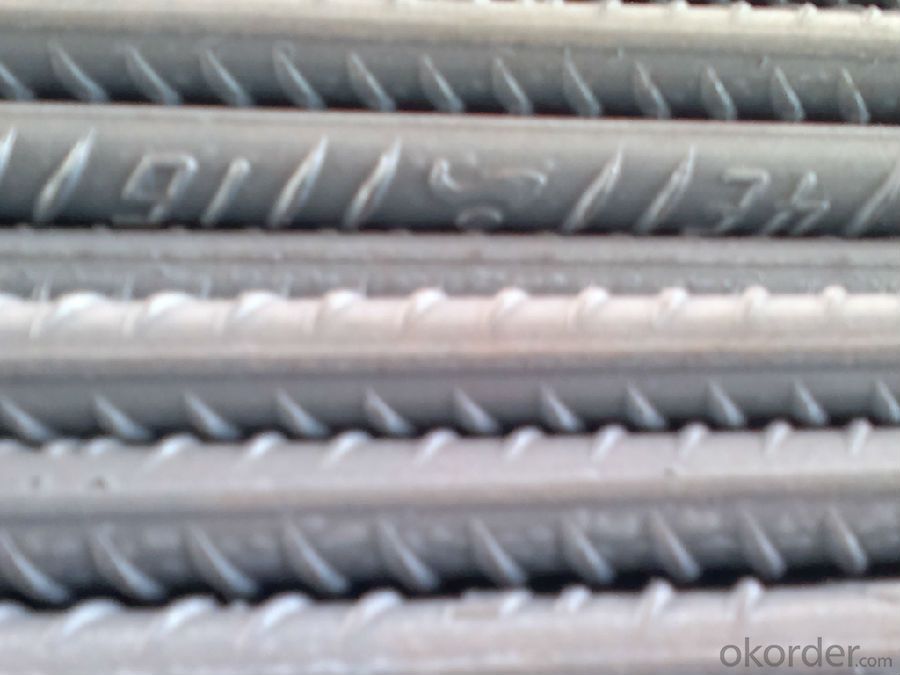
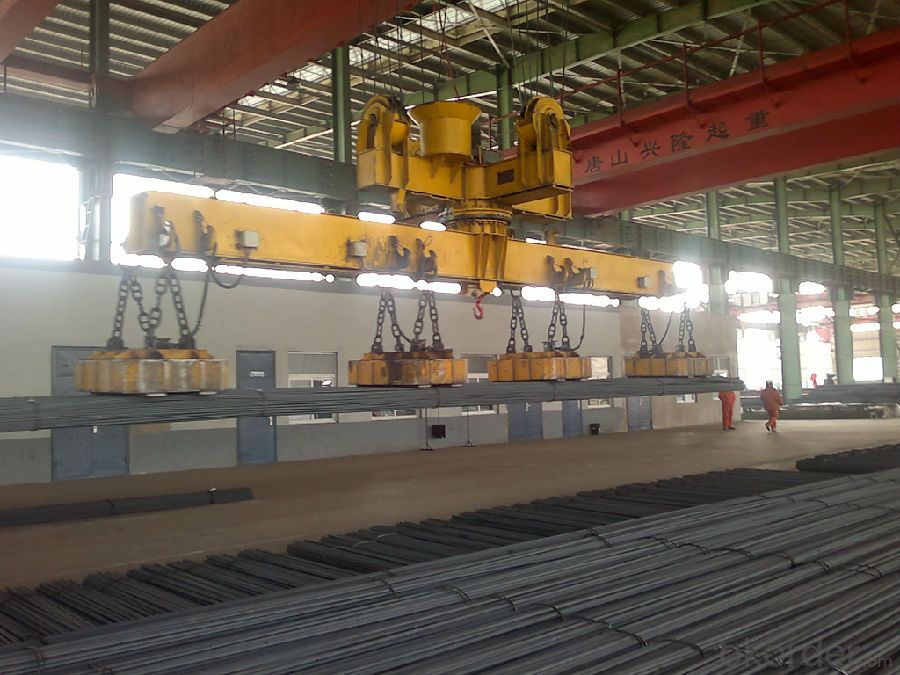
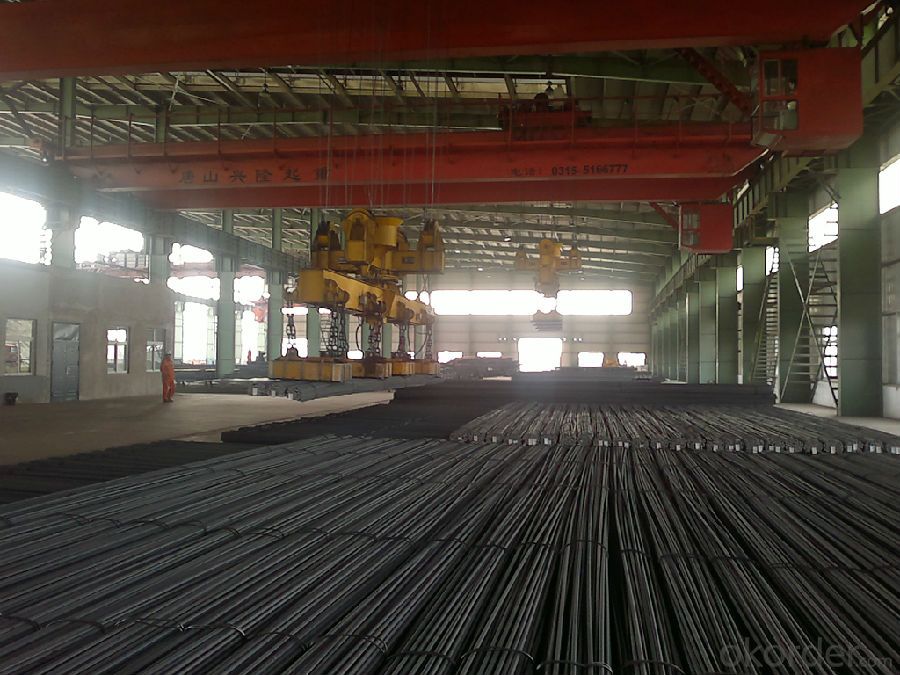
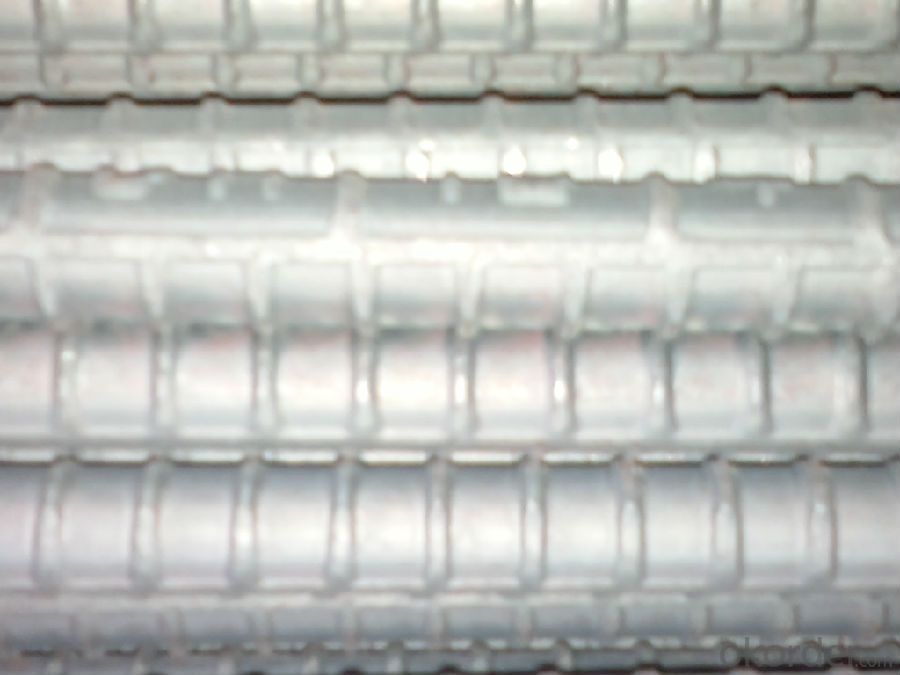
- Q:How do steel rebars affect the seismic performance of a structure?
- The seismic performance of a structure is significantly impacted by steel rebars. Steel rebars have the primary function of reinforcing concrete and increasing its strength and ductility. This reinforcement is essential in reducing the damaging effects of seismic activity. When an earthquake occurs, a structure is subjected to different forces, such as lateral forces, shear forces, and bending moments. These forces can cause deformation, cracking, or even collapse of the structure. However, steel rebars provide resistance against these forces and help maintain the integrity of the structure. By increasing the tensile strength of concrete, steel rebars enhance its ability to withstand the lateral movement caused by seismic waves. This allows for a more even distribution of forces, minimizing the formation and propagation of cracks and reducing the risk of structural failure. Additionally, steel rebars improve the ductility of the structure. Ductility refers to a material's ability to deform without breaking. During an earthquake, the shaking of the ground can cause the structure to deform and oscillate. Steel rebars enable the structure to absorb and dissipate energy, decreasing the chances of sudden failure. This ductile behavior is particularly important in areas prone to earthquakes as it provides warning signs of potential structural distress, allowing occupants to evacuate safely. Moreover, steel rebars can be strategically placed in critical areas of the structure, such as the beam-column joints, which are highly vulnerable during seismic events. Proper detailing and configuration of rebars in these areas can greatly enhance seismic performance by strengthening connections and preventing premature failure. In conclusion, steel rebars play a critical role in improving the seismic performance of a structure. They enhance the tensile strength of concrete, improve ductility, reduce crack formation, and strengthen critical areas. These factors collectively contribute to a more resilient structure that can better withstand and absorb the forces generated during an earthquake, ultimately ensuring the safety and stability of the building and its occupants.
- Q:Can steel rebars be used in sports arena construction?
- Yes, steel rebars can be used in sports arena construction. Steel rebars are commonly used as reinforcement in concrete structures, including sports arenas. The use of steel rebars provides added strength and stability to the concrete, ensuring that the structure can withstand the loads and stresses imposed by the arena's design, such as the weight of the roof, seating, and equipment. Additionally, steel rebars help to prevent cracking and improve the overall durability of the arena. They are often embedded within the concrete foundation, columns, and beams of the structure to enhance its structural integrity and longevity.
- Q:Can steel rebars be used in underground construction or tunnels?
- Yes, steel rebars can be used in underground construction or tunnels. Steel rebars provide crucial reinforcement to concrete structures, enhancing their strength and durability. In underground construction or tunnel projects, where structural integrity is of utmost importance due to the surrounding soil and potential pressure, steel rebars are commonly used to reinforce concrete walls, floors, and ceilings, ensuring the safety and stability of the underground structures.
- Q:What is the impact strength of steel rebars?
- The impact strength of steel rebars is high, making them capable of withstanding heavy loads and absorbing energy without breaking or fracturing easily.
- Q:Are there any alternatives to steel rebars?
- Yes, there are several alternatives to steel rebars. One alternative is the use of fiber-reinforced polymer (FRP) rebars, which are made of high-strength fibers embedded in a polymer matrix. FRP rebars offer several advantages over traditional steel rebars, including corrosion resistance, high tensile strength, and lightweight properties. They are also non-magnetic and electrically non-conductive, making them suitable for areas with electromagnetic interference concerns. Another alternative is the use of basalt rebars, which are made from basalt rock fibers. Basalt rebars offer similar benefits as FRP rebars, including corrosion resistance and high tensile strength. Additionally, some manufacturers have developed alternative materials such as bamboo, carbon fiber, and glass fiber rebars, which have also shown promise in certain applications. However, it is important to note that the choice of alternative rebars depends on the specific requirements of a project, and factors such as cost, availability, and local building codes should be considered when selecting an alternative to steel rebars.
- Q:Can steel rebars be used in corrosive chemical environments?
- Steel rebars can be used in corrosive chemical environments, but their performance and durability may be compromised. Steel is susceptible to corrosion when exposed to certain chemicals, especially those that are acidic or contain chlorides. In such corrosive environments, the rebars can undergo corrosion, leading to structural damage and reduced load-bearing capacity. To mitigate the corrosion risk, various measures can be taken. One common approach is to coat the rebars with a protective layer, such as epoxy or zinc coating, to create a barrier between the steel and the corrosive environment. Additionally, using stainless steel rebars or other corrosion-resistant alloys can provide better resistance against chemical corrosion. It is crucial to consider the specific chemicals present in the environment and consult with corrosion engineers and experts to determine the appropriate measures for using steel rebars in corrosive chemical environments. Proper maintenance and regular inspections are also necessary to monitor any signs of corrosion and take prompt corrective action to ensure the structural integrity and safety of the reinforced concrete structures.
- Q:Can steel rebars be used in the construction of stadiums for indoor sports?
- Yes, steel rebars can be used in the construction of stadiums for indoor sports. Steel rebars provide structural strength and reinforcement to concrete, making them suitable for supporting the heavy loads and ensuring the stability of the structure.
- Q:Are steel rebars suitable for use in industrial facilities?
- Yes, steel rebars are suitable for use in industrial facilities. They provide excellent strength and durability, making them ideal for reinforcing concrete structures in such facilities. Steel rebars can withstand heavy loads and extreme conditions, ensuring the safety and long-term stability of industrial buildings and infrastructure.
- Q:What are the standard sizes for steel rebars?
- Steel rebars come in various standard sizes, which depend on both the country and industry standards. However, there are some commonly used sizes for steel rebars, such as #3, #4, #5, #6, #7, #8, #9, #10, #11, #14, and #18. These numbers correspond to the diameter of the rebar in inches. For instance, a #3 rebar has a diameter of 3/8 inch, while a #18 rebar has a diameter of 2 1/4 inches. It is worth noting that different countries may employ their own unique sizing systems. Therefore, it is always essential to refer to the local building codes and standards to obtain accurate information regarding steel rebar sizes.
- Q:How do steel rebars affect the constructability of complex architectural designs?
- Complex architectural designs heavily rely on steel rebars to ensure their constructability. These reinforced bars are indispensable in providing structural integrity and strength to concrete elements, allowing for the creation of intricate and innovative designs. To begin with, steel rebars enable architects to design structures with larger spans and heights by offering the necessary load-bearing capacity. This is particularly crucial in complex designs involving cantilevers, soaring roofs, or suspended floors, as the rebars evenly distribute the loads, preventing any risk of structural failure. Furthermore, steel rebars enhance the constructability of complex architectural designs by facilitating the construction of slender and lightweight structures. Their strength and durability make it possible to reinforce thin concrete elements, effectively reducing the overall weight of the structure. This not only enhances the aesthetic appeal of the design but also leads to cost savings during the construction phase thanks to the reduced material requirements. In addition, steel rebars provide flexibility during the construction process. They can be easily bent and shaped to match the intricate geometries and curves of complex architectural designs. This allows architects to bring their creative vision to life by incorporating unique and eye-catching elements into the structure. Moreover, steel rebars significantly contribute to the durability and longevity of complex architectural designs. By reinforcing the concrete, they enhance its resistance to cracking, bending, and corrosion. This becomes particularly important in areas prone to seismic activity or harsh weather conditions, as the use of rebars ensures that the structure can withstand these challenges and remain intact over time. Overall, the impact of steel rebars on the constructability of complex architectural designs cannot be overstated. Their strength, versatility, and ability to reinforce concrete elements make it possible to create structures that are not only visually appealing but also structurally sound. Without the support of steel rebars, the construction of such complex designs would be considerably more challenging, if not outright impossible.
1. Manufacturer Overview |
|
|---|---|
| Location | |
| Year Established | |
| Annual Output Value | |
| Main Markets | |
| Company Certifications | |
2. Manufacturer Certificates |
|
|---|---|
| a) Certification Name | |
| Range | |
| Reference | |
| Validity Period | |
3. Manufacturer Capability |
|
|---|---|
| a)Trade Capacity | |
| Nearest Port | |
| Export Percentage | |
| No.of Employees in Trade Department | |
| Language Spoken: | |
| b)Factory Information | |
| Factory Size: | |
| No. of Production Lines | |
| Contract Manufacturing | |
| Product Price Range | |
Send your message to us
Hot Rolled Steel Deformed Bar D-BAR HRB400 HRB500 SD400
- Loading Port:
- Tianjin
- Payment Terms:
- TT OR LC
- Min Order Qty:
- 500 m.t.
- Supply Capability:
- 30000 m.t./month
OKorder Service Pledge
OKorder Financial Service
Similar products
New products
Hot products
Related keywords
